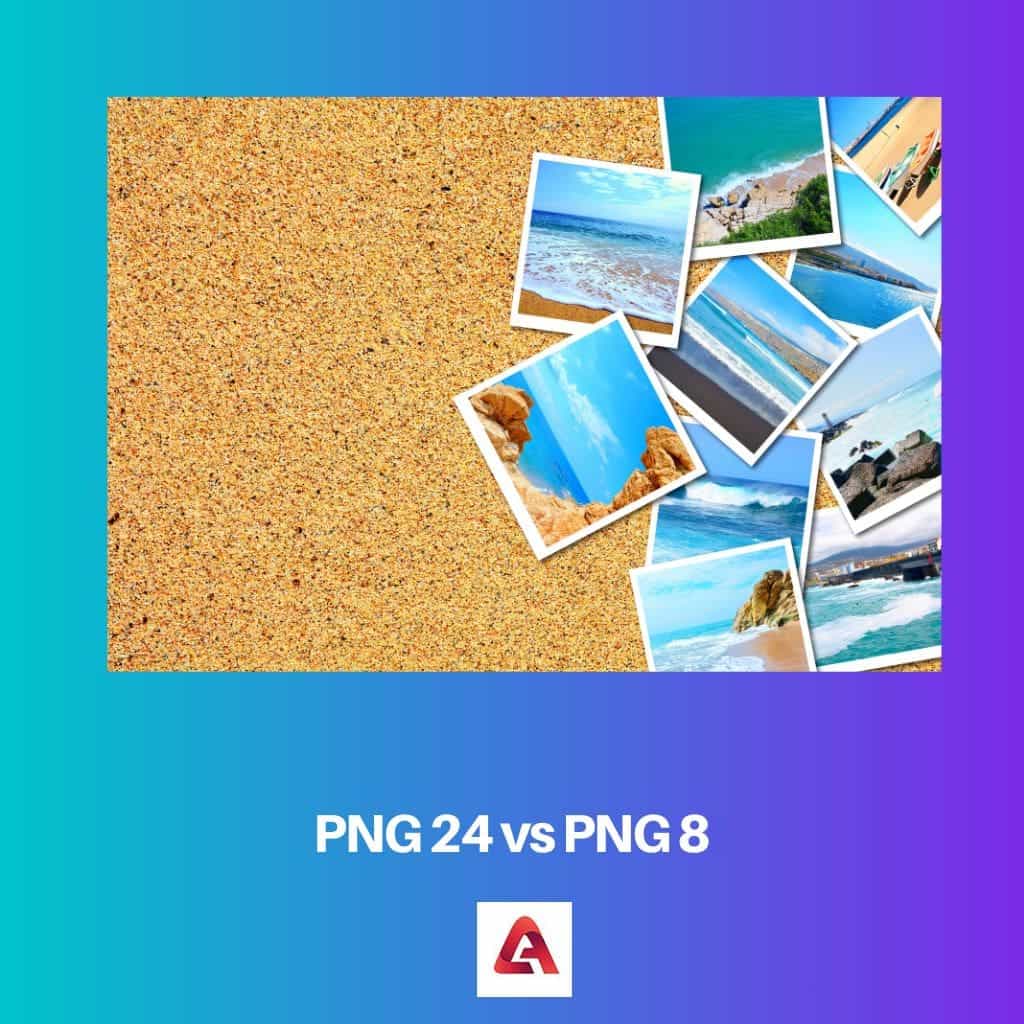Both the term PNG 24 and PNG 8 are image files and very high-quality graphic formats. They use lossless compression and are considered a replacement for GIF. Letting the users make a trade-off between the file’s size and the image’s quality after the image’s compression. They are considered better than GIFs as they support the interlacing of images and develop faster as well. The best thing about PNG is that there is no loss in the quality of the image, even after opening and saving the file again and again.
It also offers a really good pixel-to-pixel representation of the screen. We can use PNG for photos that have line art, drawing and illustrations. It can also be used for handwritten letters and newspaper articles. PNG is suitable for anything with text or page layouts made in Photoshop and then saved as images.
Key Takeaways
- PNG-24 supports 16.7 million colors, providing high-quality images, while PNG-8 supports only 256 colors, resulting in lower-quality images.
- PNG-24 files are larger compared to PNG-8 files, which are more compact.
- PNG-8 is suitable for simple images with limited colors, while PNG-24 is better for complex images with rich colors and gradients.
PNG 24 vs PNG 8
PNG-24 supports up to 16.7 million colors and has a higher color depth than PNG-8. This means that images saved in PNG-24 format are of higher quality and offer more color variation. PNG-24 is best suited for images with complex color gradients, such as photographs or transparent images.

PNG 24 is quite similar to PNG 8 but supports 16 million colors. The best part about PNG 24 is that it preserves the color variations, for example, better gradients, and prevents banding as well. It provides a larger file as compared to others. It is considered best for line arts and basic graphics, but it gives the file extra size, which is unnecessary. If you have very complex graphics and photos requiring extra detail retentions, then PNG 24 is the best choice you can make.
PNG 8 stands for 8-bit, which supports a 256-color range scheme. It is similar to GIF and uses a lossless method for compression. It is a palette variant which is smaller in size. It highly supports transparency and compresses those areas which are of solid colors. It helps the users to preserve the sharp details of the image.
Comparison Table
| Parameters of Comparison | PNG 24 | PNG 8 |
|---|---|---|
| Definition | A PNG file with 24-bit version which supports true colors and provides very good quality to the image because of this true colors schemes. | PNG file with 8-bit color depth which is not suitable for complex graphics as it leads to banding on the images. |
| Compression | lossless | lossy |
| Suitable for | Graphic images with color variations and wide range of colors | Images with less color data and image detailing |
| Supports | Index transparency. PNG-24 provides transparency of the index which provides an effect of illusion of smooth transparency alongside the curves of your graphics. | Alpha transparency. PNG-8 supports the transparency of alpha and background index. |
| Number of colours | 16 million | 256 |
What is PNG 24?
PNG 24 is a true color variant which supports a transition from an opaque to a transparent effect. If you are working on web photos and detailed images, then PNG 24 is the best choice. The user can obtain a larger file size in PNG 24 because of the amount of information that will be retained. The use of PNG 24 is recommended when you are working with an image, including multiple levels of partial transparency.
These files are larger than JPEG files and support multilevel transparency. The user can obtain a larger file size in PNG 24 because of the amount of information that will be retained. The use of PNG 24 is recommended when you are working with an image, including multiple levels of partial transparency.
PNG 24 uses index transparency in which you can apply matte color. This effect is so good as it gives an illusion of very smooth transparency along with the curves of the graphic.
What is PNG 8?
The 8-bit version of the PNG format in which each color for a particular pixel is represented with a string of 8 bits. It is capable of displaying around 256 colors. 8bit also allows images to get stored with a lesser number of bits like 2-bit as well as 4-bit. For those images which have low color variation, this format of PNG file is best suited for them.
PNG-8 is considered the best for small graphics, logos and line art. It is unsuitable for complex graphics as it leads to image banding. PNG-8 supports transparency of alpha and background index.
Alpha Transparency
It provides multiple stages of transparency, which further helps in providing a smoother blend along with the curves and edges. With this, you can have varying percentages of transparency in your graphics and other images. It provides you with 50% opacity on the whole image.
Main Difference Between PNG 24 and PNG 8
- PNG 24 has a lossless compression capability, whereas PNG 8 comes with lossy compression.
- PNG 8 supports a single-bit transparency channel, and PNG 24 aims to support the transition from opaque transparency.
- The color support is maximum in PNG 24 as it can support 16 million colors whereas PNG 8 is capable of supporting 256 colors.
- PNG 8 works best for small graphics, which does not require more color details, and PNG 24 is best for web photos and detailed images.
- PNG 24 supports index transparency, whereas PNG 8 supports alpha transparency
- Other advantages of using PNG are lossless compression, patent-free, better file size compression, gamma correction control and alpha channel transparency.



